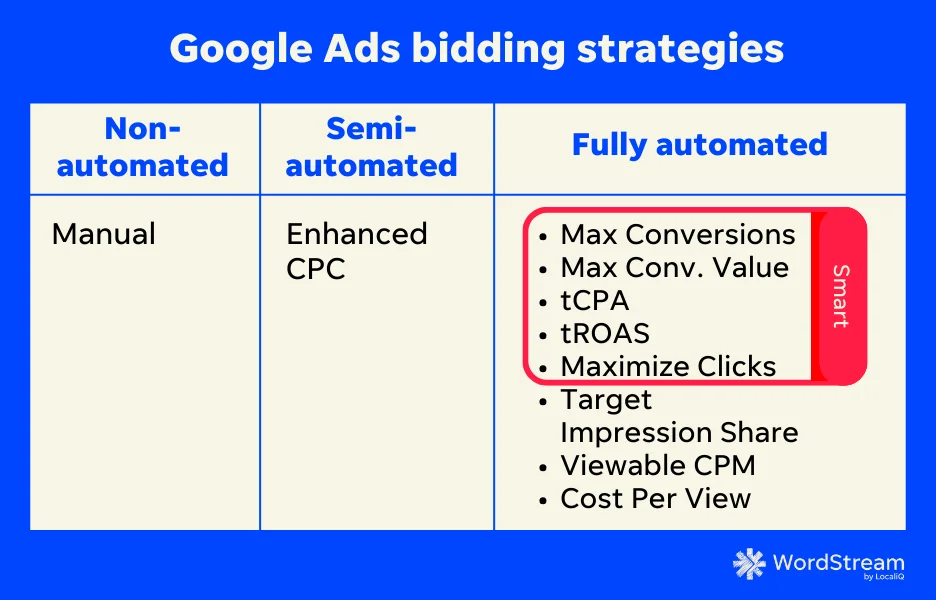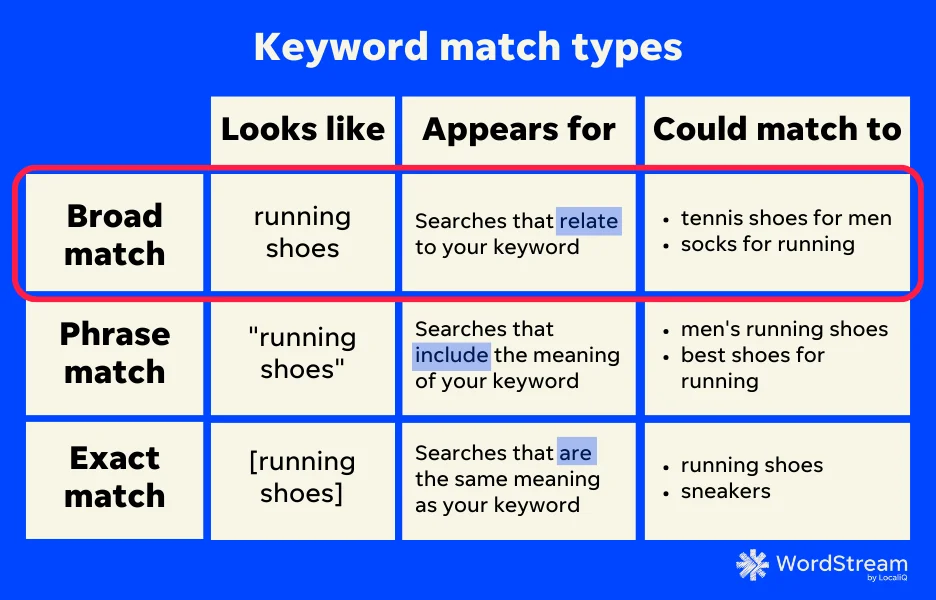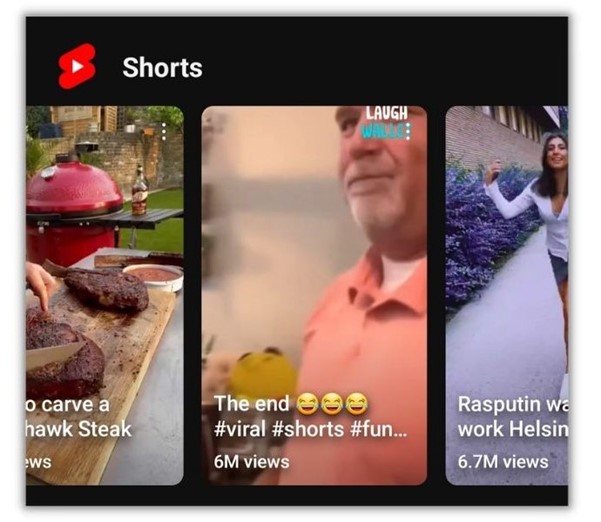PPC
The 5 Biggest Google Ads Trends for 2024 (+6 Predictions)

Google Ads is constantly evolving. Over the last year, advertisers have gotten access to more AI tools, lost some attribution models, and seen countless updates across the platform.
As we enter a new year, I’ve put together some Google Ads trends and predictions I think advertisers need to know to continue seeing success and keeping up with the constant changes.
Here are the top Google Ads trends I predict will be big in 2024:
- Google Ads will release more AI-powered features
- Automation and smart bidding will become more popular
- More emphasis on broad match
- Video advertising will grow
- Search will take on a more visual experience
Plus, I’m sharing six more Google Ads and PPC predictions to watch for.
5 biggest Google Ads trends for 2024
Here are what I predict will be the biggest Google Ads trends you need to know this year.
1. Google Ads will release more AI-powered features
AI and machine learning tools have already started redefining the way we run paid search campaigns. This year promises even more sophisticated automated bid strategies, advanced audience targeting, and semi-autonomous ad creation. Additionally, with predictive analytics, advertisers can foresee consumer behavior, optimizing campaigns for “better results.”
Advanced automated bid strategies have already been a massive change to Google’s formerly very manual process of adjusting bids and fine-tuning results. I expect that to continue to evolve now with Google Analytics 4 (GA4) and Google’s focus on the data-driven attribution model.
With that, we can also expect the following AI-powered features in Google Ads:
Semi-autonomous ad creation
Google is very keen on encouraging advertisers to use their Performance Max (PMAX) campaign type. If you are unfamiliar, Performance Aax allows advertisers to access all of Google’s ad inventory (YouTube, Search, Discover, Gmail, and Maps) from a single campaign.
In PMAX, ads are created through inputs. Text assets can currently be created through advertiser inputs with the quick development of AI-generated imagery I would expect to see that become a feature in the not-so-distant future. For years marketers had to manually test everything associated with a campaign. AI removes that heavy lifting by being able to test multiple ad copy variations, suggest keyword inclusions based on search trends, and even optimize visual elements in an ad for maximum engagement.

🛑 Worried you’re wasting spend in Google Ads? Find out with a free, instant audit >> Google Ads Performance Grader
Enhanced audience targeting
Advertising platforms have already begun to incorporate AI into the process of audience segmentation. Facebook in particular has rolled out its “Advantage+” audience, essentially handing the keys to artificial intelligence to find the right segmentation for you.
I anticipate Google will be doubling down on this as well with Performance Max and the broadening of keyword match types. By analyzing users’ search histories, site interactions, and even social media behaviors, AI-driven platforms can predict user intent with impressive accuracy. This means ads can be displayed to users who are more likely to convert, similar to how the automated bid strategies work now, just taking that concept to the next technological level.
Predictive analytics in campaign optimization
Rather than merely reacting to past data, AI could enable proactive campaign management using predictive analytics. By evaluating past campaign performances and current market trends, AI could forecast potential pitfalls or opportunities in future campaigns.
This means marketers can adjust their strategies in anticipation, rather than in reaction. There are elements of this already present in current advertising platforms, but not to the extent that I believe it will be. I anticipate that we will be hearing more buzz around the concept of predictive analytics than we already currently are shortly.
Continuous learning and improvement
The true power of AI lies in its ability to learn continuously. Machine learning models refine themselves with every piece of data they encounter. In the context of paid search, this means that AI-powered tools become more attuned to an advertiser’s goals and the target audience’s nuances over time. We already have seen this trajectory with PMAX and smart bidding. I would expect advertisers to experience more advancements and promotions on the Google side regarding this feature.
The blend of AI and paid search heralds a future where campaigns are smarter, more responsive, and, importantly, more effective. While AI will handle much of the heavy analytical lifting, the role of the marketer will shift to more strategic decision-making, creative endeavors, and leveraging AI’s insights for maximum impact.
2. Automation and smart bidding will become more popular
Along the same lines as the AI-powered features we covered above, automation in ad creation and audience targeting will become more prevalent across the board regardless of campaign. Smart bidding strategies like Target CPA and ROAS will continue to be popular, leveraging AI for efficient campaign optimization.


Smart bidding has already proven itself to be effective, in my opinion. When first launched, I had a fair amount of skepticism around the concept, primarily because AI as a technology wasn’t particularly where it is nowadays. However, max conversions, tCPA, and tROAS have all been extremely useful to advertisers once they gather enough learning data. Over time, these bidding strategies typically do improve a well-structured campaign.
⚡️ Is your Google Ads account set up for success? Download now >> The Last Guide to Google Ads Account Structure You’ll Ever Need
3. More emphasis on broad match
Google has been encouraging advertisers to use broad match more now than they ever have. The reason behind this is their confidence in smart bidding and AI’s ability to learn and optimize for results over time. So in essence, the more data you give the machine, the more it will be able to adapt to the goal that you have specified.


This is something that I’m still somewhat skeptical about to a degree as someone who, for many years, really liked to refine campaigns with match types and negative keywords to hone in on the specific queries that the business was interested in. I enjoyed the process of having a lot of fine-tuning control over my paid marketing efforts. With the way the industry is trending now, that level of transparency is very quickly evaporating.
🔎 Need help finding the right keywords? Try our Free Keyword Tool!
4. Video advertising will grow
I expect video advertising to grow, not completely in the sense of the general YouTube Ads you’re currently experiencing, but in the realm of short-form video ads. YouTube Shorts are Google’s answer to TikTok and Meta’s Reels. Now, you can run ads targeting Shorts as a placement, however, I believe with the increased advertising competition on both TikTok and Instagram, there will be a lot more attention going towards Shorts in trying to encourage advertisers to utilize them as a placement. They may do this by simplifying the setup and using AI to help advertisers create ads.


5. Search will take on a more visual experience
Search has been trending towards a more visual experience for a while now. Advertisers can already include images with their search ads but I expect this to advance quite a bit more in 2024.
More Google Ads and PPC predictions to watch for
Here are six examples of advancements that may not release in 2024, but may begin to trend in that direction:
1. Augmented reality integration
2024 could see the beginning of Augmented Reality (AR) in search ads. Imagine pointing your phone at a product and instantly seeing how it looks in your space or how it works. AR ads could allow users to interact with products in a virtual environment directly from the search results, offering an experience beyond static images.
2. Dynamic image ads
Based on where PMAX and responsive ad formats are currently, I could imagine Google taking these a bit further. Instead of static images, we might see the rise of dynamic image ads. These ads would change based on user behavior or preferences. For instance, showing different product colors or styles based on the user’s past browsing history.
3. 360-degree product previews
In 2024, search ads could offer 360-degree views of products, allowing users to explore every angle before making a decision. This feature would be particularly beneficial for high-value items like electronics, vehicles, or furniture, where detail and perspective are crucial. Meta already has a 360-degree creative feature, I would expect Google to work towards something similar.
4. Video integration in search ads
The integration of short, auto-playing videos within search ads could become more prevalent. These videos would offer quick glimpses or demonstrations of products, providing a richer understanding than images alone.
5. Interactive ads
Interactive ads that allow users to engage directly from the search results could be a game-changer. From simple games to quizzes that lead to personalized product recommendations, these ads could increase user engagement significantly.
6. Voice-activated ads
With the rise of voice search, voice-activated ads could become a reality. Users could interact with ads using voice commands, making the search experience more accessible and hands-free.
These are all hypothetically possible, of course, there is no guarantee any of these are within the pipeline. I could see them becoming a reality down the line as search begins to evolve and incorporate more AI into the user experience.
Stay on top of the latest Google Ads trends
The landscape of paid search is undoubtedly shifting towards a future where AI and automation play dominant roles. As we’ve explored, the rise of PMAX campaigns, an emphasis on smart bidding, broad match strategies, and the growth of video advertising are all indicators of a more AI-integrated approach. While some advertisers may lament the loss of granular control and transparency, there’s no denying the efficiency and effectiveness these advancements bring.
The dual perspectives on these changes—technological advancement versus a push for increased advertising revenue—highlight the complex nature of the industry’s evolution. It’s a balancing act between enhancing user and advertiser experiences and the commercial imperatives of major platforms like Google and Meta. For those of us navigating these changes, it’s important to stay up to date on how the decisions Google makes impact our advertising strategies.












